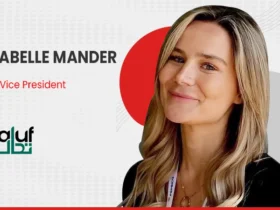WiMi Hologram Cloud Inc., a leading global Hologram Augmented Reality (“AR”) Technology provider, announced the research of a new quantum algorithm—the Holographic Quantum Linear Solver (HQLS), which aims to provide a more efficient and resource-efficient quantum algorithm for solving the Quantum Linear System Problem (QLSP). This algorithm is based on a combination of Variational Quantum Algorithms (VQA) and the classical shadow framework, overcoming the hardware resource bottlenecks of traditional quantum linear solver algorithms.
QLSP refers to the problem of solving linear systems of equations using quantum computing. Solutions to the QLSP often rely on the quantumization of classical linear algebra algorithms used in quantum computing. The most famous quantum linear system solving algorithm is the Harrow-Hassidim-Lloyd (HHL) algorithm, which accelerates the solution of linear systems through quantum superposition and interference. In theory, it can reduce the time complexity from the classical polynomial level to the logarithmic level of quantum computing. However, the HHL algorithm requires the use of large-scale controlled gate operations on quantum hardware, making it difficult to implement on existing quantum computers.
VQAs are a class of algorithms that combine quantum computing with classical optimization methods. VQAs solve problems by implementing parameterized quantum circuits in quantum computing and optimizing the parameters of the quantum circuit using classical optimizers. VQAs are widely applied in fields such as quantum machine learning, quantum chemistry, and quantum linear equation solving.
The core advantage of VQAs lies in their relatively low resource requirements. By using the variational method, VQAs avoid the need to perform complex global operations in quantum circuits, instead optimizing circuit parameters within local spaces. This reduces the number of qubits and quantum gates required.
The classical shadow framework is a strategy used for approximate computations, typically playing a role in scenarios that combine quantum and classical computing. The shadow method obtains approximations by simulating certain computational processes and is widely used in model training in machine learning and algorithm design in quantum computing.
The advantage of the shadow framework is its ability to make efficient estimates with a small number of samples, significantly reducing the need for computational resources. Therefore, combining the shadow framework with quantum computing holds the potential to create more efficient quantum algorithms.
WiMi’s HQLS combines the ideas of VQAs and the classical shadow framework. It aims to solve linear systems by optimizing the parameters of the quantum circuit, while avoiding the need for large controlled units. The core idea of the algorithm is to optimize the parameters of the quantum circuit using VQA, and to approximate the computation results at each iteration by combining the classical shadow framework, thus effectively reducing the computational complexity of the algorithm.
The basic process of WiMi’s HQLS can be divided into the following steps:
Initialization: Initialize the quantum system and preprocess the linear system using classical algorithms to generate the parameterized quantum circuit.
Parameterized Quantum Circuit: Design the quantum circuit using VQA and initialize the parameters of the circuit.
Iterative Optimization: Optimize the parameters of the quantum circuit using a classical optimizer, and after each optimization, obtain an approximate solution through quantum computation.
Shadow Framework Approximate Calculation: At each parameter update, use the classical shadow framework to approximate the output of the quantum circuit, thereby avoiding high quantum resource consumption.
Convergence Check: Calculate the error between the current solution and the true solution to determine whether the algorithm has converged.
Result Output: Output the solution vector X of the solved system of linear equations.
WiMi’s HQLS resource optimization mainly focuses on two aspects:
Quantum Bit Count: Traditional quantum linear system solving algorithms require a large number of quantum bits to represent the different dimensions of the problem. With the introduction of VQAs, HQLS only requires quantum bits that scale logarithmically with the size of the problem, significantly reducing the number of quantum bits needed.
Quantum Gate Complexity: The optimization of the quantum circuit can significantly reduce the number of quantum gates, thereby lowering the complexity of quantum circuit execution. By combining with the classical shadow framework, HQLS avoids the need to perform large-scale controlled operations, making the quantum circuit more compact and efficient.
As a resource-efficient quantum algorithm, WiMi’s HQLS successfully overcomes the challenges of solving linear systems under the current limitations of quantum hardware. By combining VQAs and the classical shadow framework, HQLS not only operates efficiently with fewer quantum bits and quantum gates, but also demonstrates significant advantages in experiments involving the solution of multiple linear systems.
In traditional quantum linear solving algorithms (such as the HHL algorithm), the resource requirements are often quite high, particularly in terms of the number of quantum bits and the complexity of quantum gates, making it difficult to implement them on current noisy intermediate-scale quantum (NISQ) computers. However, HQLS significantly reduces the resource requirements for quantum hardware by innovatively introducing the framework of Variational Quantum Algorithms (VQA). Additionally, with the assistance of the classical shadow framework, the computational complexity is further reduced, enabling efficient solutions on practical quantum hardware.
Also Read: WiMi Unveils FPGA-Based Quantum Computer Verification
We have verified the effectiveness of WiMi’s HQLS through experiments on multiple linear systems (such as solving high-dimensional matrices and discretized Laplace equation problems). The experimental results demonstrate that HQLS excels in both solution accuracy and computational efficiency. In particular, when compared to other quantum linear system solving methods, it shows lower quantum resource consumption and faster convergence.
Currently, the experiments of HQLS still rely on noisy intermediate-scale quantum computers for validation, and thus face the challenges of quantum noise and errors. In the future, the combination of quantum error correction (QEC) techniques and noise suppression algorithms will improve the stability and robustness of HQLS on practical quantum hardware. By introducing quantum fault-tolerant technologies, HQLS will be able to scale to larger quantum computers and operate stably in high-noise environments.
In the future, with the continuous optimization of quantum computing hardware and the increase in the number of quantum bits, HQLS can undergo larger-scale validation on practical quantum computers. Particularly with advancements in error correction techniques and improvements in quantum bit quality, it is expected that the efficiency and accuracy of HQLS will be further enhanced.
In various application scenarios of quantum computing, HQLS can not only be applied independently but also combined with other quantum algorithms to form more complex hybrid quantum algorithms. For example, HQLS can be combined with quantum optimization algorithms, such as the Quantum Approximate Optimization Algorithm (QAOA), to tackle more complex optimization problems. Furthermore, HQLS can be integrated with quantum simulation algorithms to solve large-scale linear systems involved in modeling physical processes.
HQLS has significant application potential, especially in areas like large-scale data processing, physical simulations, and optimization problems. As quantum computing capabilities improve, HQLS could be used to solve more complex linear system problems in fields such as climate modeling, quantum chemistry, machine learning, and financial modeling. For instance, in quantum chemistry, HQLS could be used to solve the electronic structure of molecular orbitals, providing more efficient simulation results; in machine learning, it can accelerate the solution of linear regression and least-squares problems.
WiMi’s HQLS, as an interdisciplinary quantum algorithm, is expected to integrate more deeply with other fields (such as quantum information, quantum machine learning, quantum chemistry, etc.) in the future. In particular, in the application of quantum machine learning, HQLS could provide a more efficient computational tool for training large-scale machine learning models. Moreover, with the exploration of emerging fields like quantum consciousness research and quantum neural networks, HQLS may also become a foundational tool for solving complex problems in these areas.
The introduction of WiMi‘s Holographic Quantum Linear Solver (HQLS) opens up new avenues for the application of quantum computing in solving linear system problems. By combining Variational Quantum Algorithms (VQA) with the classical shadow framework, HQLS effectively reduces the resource requirements for quantum hardware, enabling efficient solutions on current quantum computers. Looking ahead, with continuous advancements in quantum hardware and further optimization of algorithms, HQLS is expected to see widespread application in multiple fields, driving the maturation of quantum computing technology and offering new solutions for solving complex problems in modern science and engineering.
Source: PRNewswire

































